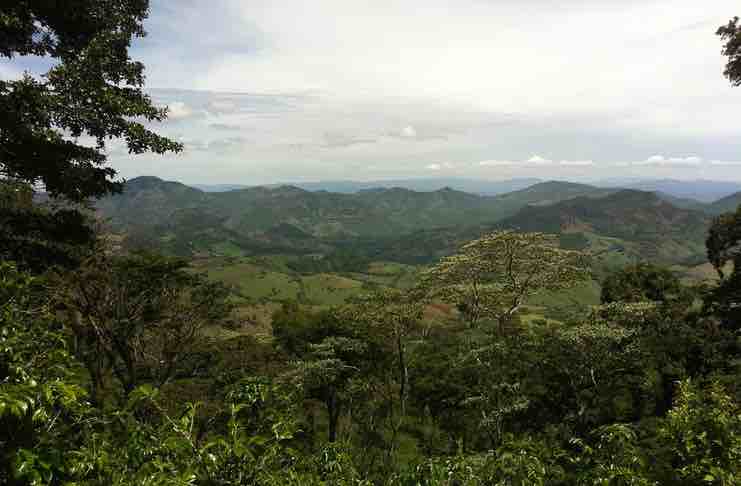Being one of the largest coffee producers in Central America, Nicaragua is a region that is known for its rich, high-quality coffee beans. Nicaragua coffee is usually the best choice for coffee enthusiasts who like their drink to have a smooth yet subtle and chocolaty flavor.
So what do you know about this geographical location and everything it takes to produce such flavorful and aromatic coffee beans? Let’s have a look.
A Quick Introduction to Nicaragua Coffee
The first time this Central American country was introduced to coffee was back in 1790 by the Catholi Missionaries. Even though this country has a rich history of coffee production, the success and monetary gains have often been hindered by political disagreements and conflicts.
Nicaragua lists among the top-rated coffee countries in the world, and the coffee beans harvested here have a lot to offer to coffee lovers.
Nicaragua Coffee Bean Highlights
Growing Altitude 3600 to 5200 feet above sea level
Growing Regions Matagalpa, Jinotega, Nueva Segovia
Harvest Period Oct to March
Acidity Bright, Citric
Body Smooth
Flavor Chocolate, Floral, Citrus
Aroma Sweet, Chocolate
Varieties Produced Bourbon, Caturra, Maracaturra, Catimor, Cutaui
What About the Organic Nature
For the organic lovers out there, it is important to know that Nicaragua coffee is usually not organic certified. However, due to bad governance and lack of funds in the coffee industry, a substantial percentage of coffee trees are organically grown.
Most of the Nicaraguan regions do qualify for High Grown (HG) and Strictly High Grown (SHG) standards.
Flavor Profile
As far as the flavor is concerned, Nicaragua coffee beans have a bright, citric acidic nature and will give you a medium-smooth body with notes of crispiness and fruitiness in them.
The aroma has elements of caramel, chocolate, and citrus that makes it a good choice for the sweet lovers out there. However, the final cup of coffee can have quite a balanced, bittersweet flavor.
Also, some flavors can range from mild citrus to strong hints of chocolate and nutty with vanilla essence.
Want To Pay a Visit? Nicaraguan Coffee Growing Regions
Love exotic coffee tours? You might not usually hear about the specific regions within Nicaragua where coffee production takes place. So let us give you a geographical overview:
Matagalpa
Situated in the northern part of the country, Matagalpa is known for high-altitude coffee beans. This region has a lot of volcanic soil and a tropical forest climate that is a perfect combination for coffee production.
Jinotega
Jinotega is also known for its volcanic soil characteristics and humid, tropical climate. The Caturra and Bourbon coffee varietals are produced in this north-central Nicaraguan region.
Nueva Segovia
This region produces some of the rare Nicaraguan coffees, which are known for their unique flavors with floral and acidic profiles.
Harvesting and Washing Nicaraguan Coffee Beans
Nicaraguan coffee beans are harvested between October and March and can be bought between January and June.
Nicaraguan coffee beans are usually processed using the ‘wet-washing’ technique, however, other processing methods are used as well.
- Dry Processing – this is a natural method in which coffee beans are dried up using the heat from the sun.
- Wet Processing – this is a method where the beans are made rid of the ‘cherry pulp’
- Honey Processing – this method is a combination of both dry and wet processing
The Elephant Coffee Beans
Nicaragua is famously known for its specific plant that produces large leaves and the world’s largest coffee beans. These are known as the Elephant beans and they are part of the Arabica beans varietal.
This specific plant can grow up to 2,500 feet above sea level. As far as the flavor is concerned, these large coffee beans have a fine body, bright acidity, and a balanced taste. Elephant beans are recommended for a medium roast and nothing above.
How to Roast and Brew Nicaraguan Coffee
If you have bought your favorite Nicaraguan coffee and you plan to roast and brew it, here are some suggestions for you:
Nicaraguan Coffee Roasting
Coffee beans from this region are widely regarded for their overall stability and dependability which makes home roasting a whole lot easier.
According to coffee enthusiasts at The Better Sip, a medium-to-dark roast is recommended for the Nicaraguan beans, with slight maneuvers according to your coffee bean roast preferences. The longer roast time will give you a rich yet balanced coffee flavor.
Nicaraguan Coffee Brewing
As far as brewing is concerned, Nicaraguan coffee is the perfect choice for Americano, long black, and a lot of other milk-based espresso lovers out there.
These beans are quite good for a cup of cold brew as well, which balances out the acidic nature and gives you a smooth flavor.
Best Nicaragua Coffee to Buy in 2021
Here are some of the best Nicaraguan coffees that you can easily get:
Don Tomas Nicaraguan Coffee
The Whole Bean Medium Roast by Don Tomas Coffee is certainly one of the better options that you can find in the Nicaraguan coffee niche. These come with a butterscotch aroma and a smooth, chocolatey flavor.
Segovia Dark Roast Ground Coffee
These 100% organically shade-grown Arabica coffee beans will give you bold, sultry flavor tones with slight notes of sweet caramel and chocolate.
Lifeboost Medium Roast
Talk about Nicaraguan coffee and Lifeboost is one of the first brands that struck. These single-origin, high-quality USDA organic beans are known for their low acidity and balanced taste.
Final words…
Despite all the political and infrastructure obstacles that this region has been dealing with since decades, Nicaragua coffee remains a noticeable coffee-producing region.
If you already have or are planning to switch to organic coffee, we would suggest you to start your journey with Nicaraguan coffee beans. Although, conventional coffee drinking can give you the same aromatic and flavorful coffee delight each time you try the Nicaraguan beans.











